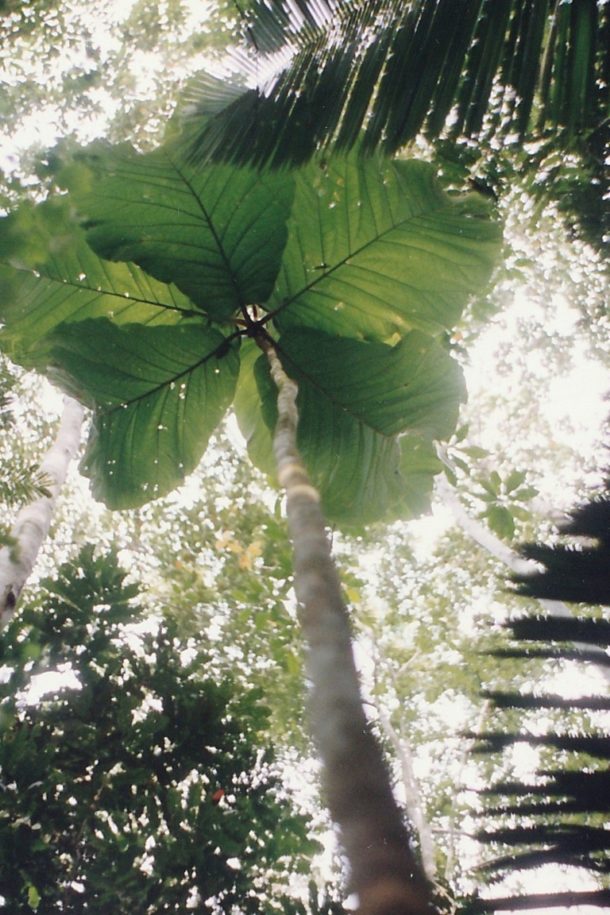
Amazonian tree with human-sized leaves finally gets ID’d as new species
It was more than a decade later, in 2005, that Gribel and his colleague, Carlos Alberto Cid Ferreira, collected some seeds and dying flowers from a tree in Jamari National Forest. Again, these materials weren’t good enough to describe the plant species. So they sowed the seeds at the INPA campus, grew the seedlings, and waited. Their patience bore fruit 13 years later. Literally.
In 2018, one of the planted trees flourished and fruited, Gribel said, finally giving them the botanical material they needed to describe the new species.
“We are very happy and proud that after the long period of ‘tracking’ such a peculiar and relatively rare species we have finally succeeded in obtaining the flowers and fruits that are the essential structures for describing a new species for science,” he said.
Gribel and his colleagues, who described the species in a recent paper published in Acta Amazonica, have named it C. gigantifolia in reference to the plant’s giant leaves.
The researchers say that C. gigantifolia, which grows to about 15 meters (49 feet) in height and has leaves that can reach 2.5 meters (8 feet) in length, likely has the largest known leaf among dicotyledonous plants — a large group of flowering plants that include sunflowers, hibiscus, tomatoes and roses. These plants have seeds that can be split into two identical halves, each forming the first two embryonic leaves of the seedling, and their leaves generally have branched veins. The seeds of monocotyledonous plants, by contrast, give out a single embryonic leaf and the grown plants’ leaves have parallel veins, such as those of palm trees, grasses, orchids and bananas.
“Comparing leaf size between species is often difficult as there is a large individual variation in leaf size within the same species,” Gribel said. “It is possible that this leadership of Coccoloba gigantifolia will be challenged in the future. For example, species of Gunnera, a genus of wide distribution worldwide, also exhibit huge leaves. But the Gunnera species are not arboreal.”
In 2018, one of the planted trees flourished and fruited, Gribel said, finally giving them the botanical material they needed to describe the new species.
“We are very happy and proud that after the long period of ‘tracking’ such a peculiar and relatively rare species we have finally succeeded in obtaining the flowers and fruits that are the essential structures for describing a new species for science,” he said.
Gribel and his colleagues, who described the species in a recent paper published in Acta Amazonica, have named it C. gigantifolia in reference to the plant’s giant leaves.
The researchers say that C. gigantifolia, which grows to about 15 meters (49 feet) in height and has leaves that can reach 2.5 meters (8 feet) in length, likely has the largest known leaf among dicotyledonous plants — a large group of flowering plants that include sunflowers, hibiscus, tomatoes and roses. These plants have seeds that can be split into two identical halves, each forming the first two embryonic leaves of the seedling, and their leaves generally have branched veins. The seeds of monocotyledonous plants, by contrast, give out a single embryonic leaf and the grown plants’ leaves have parallel veins, such as those of palm trees, grasses, orchids and bananas.
“Comparing leaf size between species is often difficult as there is a large individual variation in leaf size within the same species,” Gribel said. “It is possible that this leadership of Coccoloba gigantifolia will be challenged in the future. For example, species of Gunnera, a genus of wide distribution worldwide, also exhibit huge leaves. But the Gunnera species are not arboreal.”
Advertisements
04 February 2023
Advertisements



